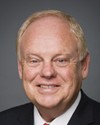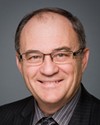Thank you, Mr. Chair, and thank you, presenters. I appreciate your input today.
As we go along with this committee, we're getting the idea that there is, of course, a huge benefit north of 60 for the residents who live up there who are able to perhaps improve their quality of life because of the economic benefits of working at the mines and in exploration.
I am sure the exploration and mine development brings a new economy to the north and employs local people. I know that a lot of specialists come in from the outside. From the local point of view, is the average family or resident who lived there prior to the mine actually seeing some real tangible gains in quality of life? Or are any personal economic gains they are making through pretty good employment being taken away by increases in the prices of goods and services they are able to buy?
In other words, I know the economy is getting better for many of the residents, but there are also a lot of businesses up there selling things to them. Is there any exploitation going on so that the personal gains are not as much as we would expect? Is anyone keeping an eye on this to make sure there are some real ground-level benefits for the people who have lived there prior to and now subsequent to the development?
Mr. Cavan and Mr. Moore, perhaps it should go to you guys.



